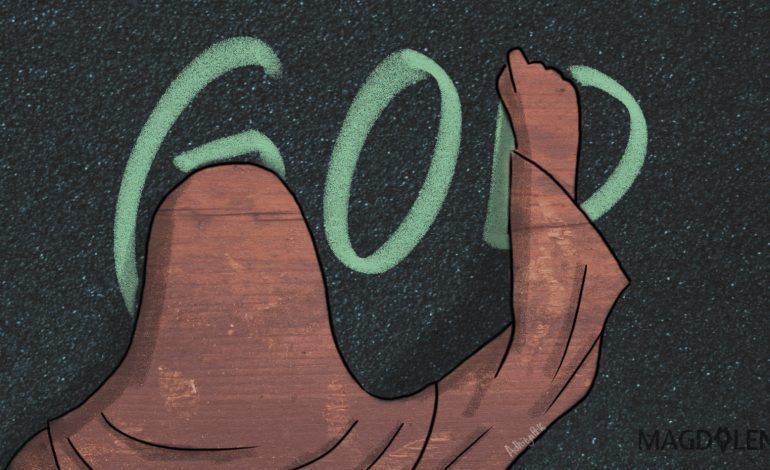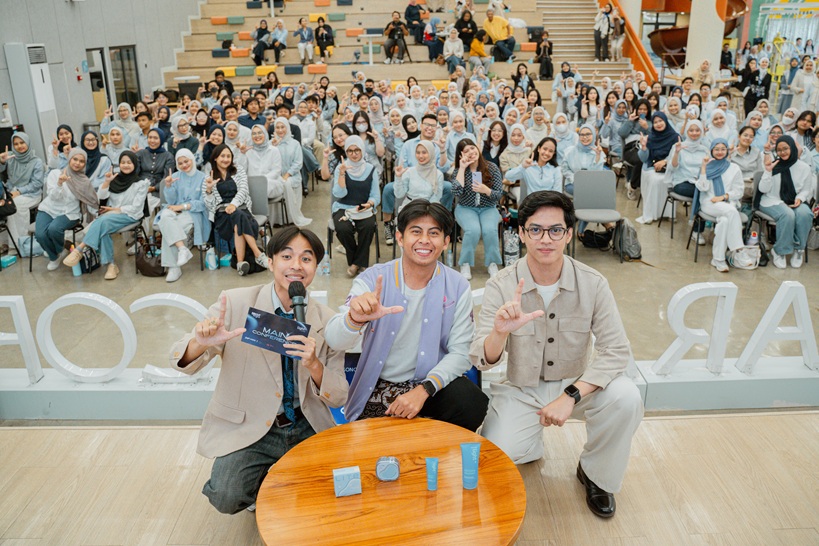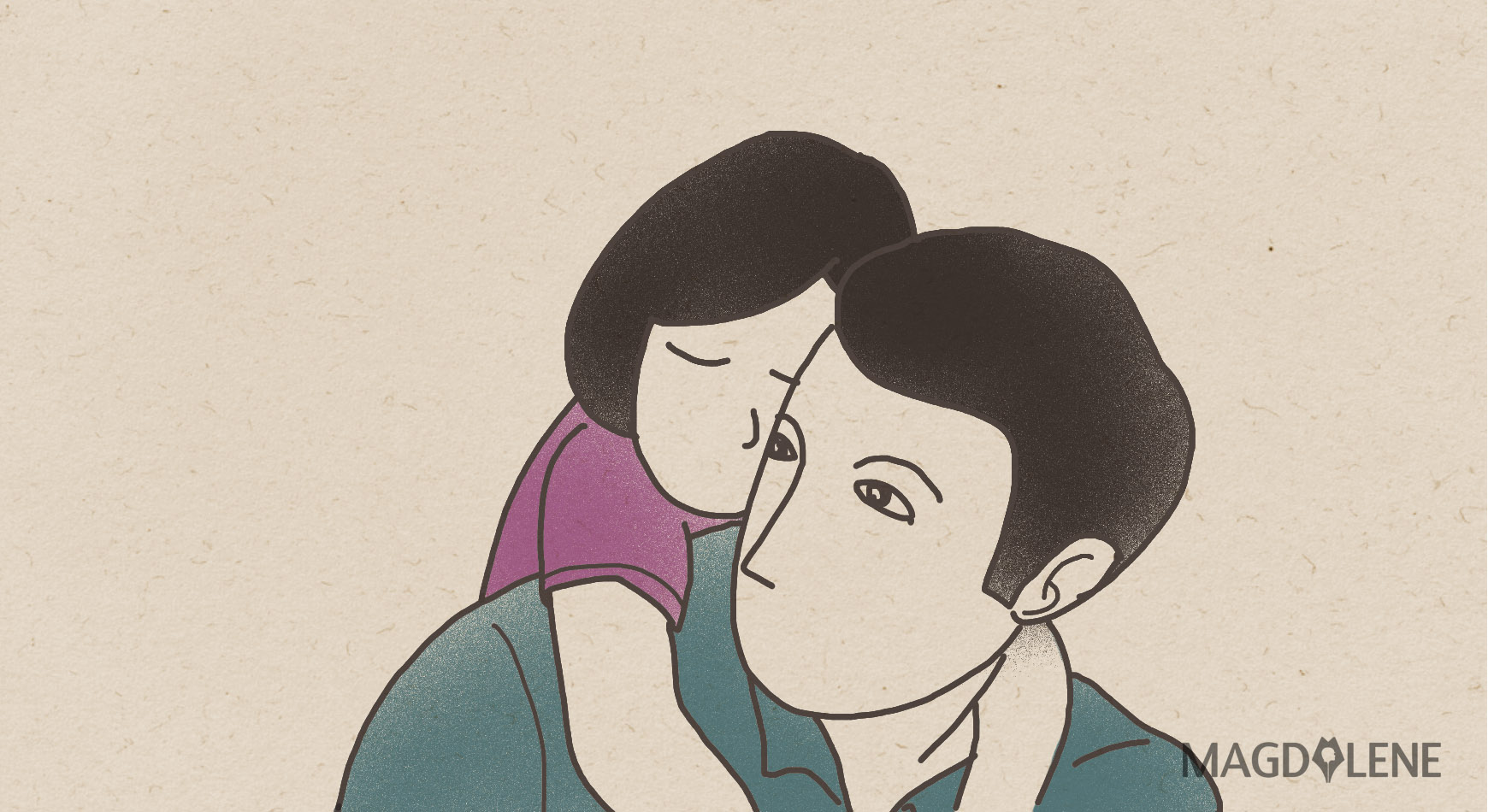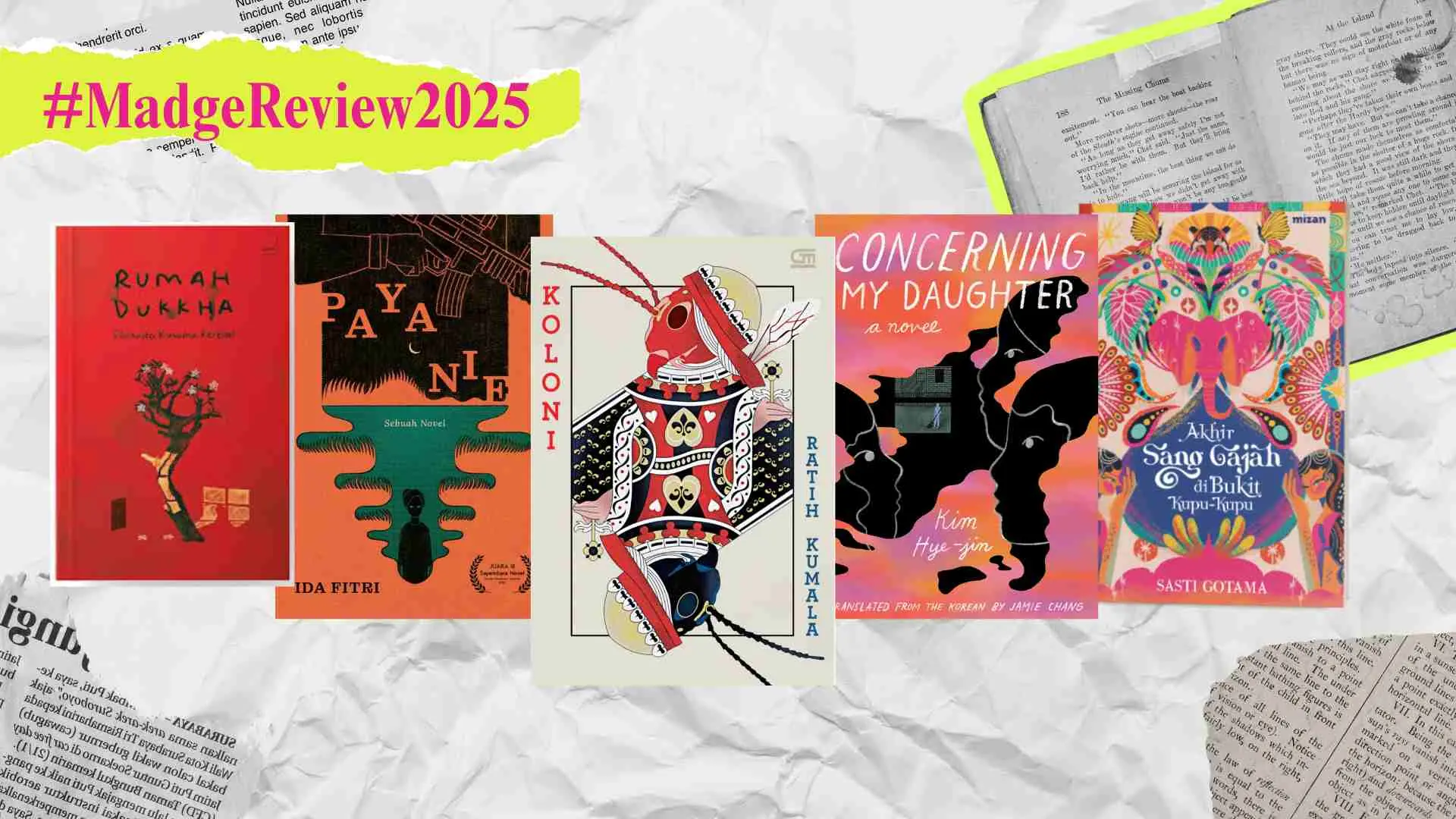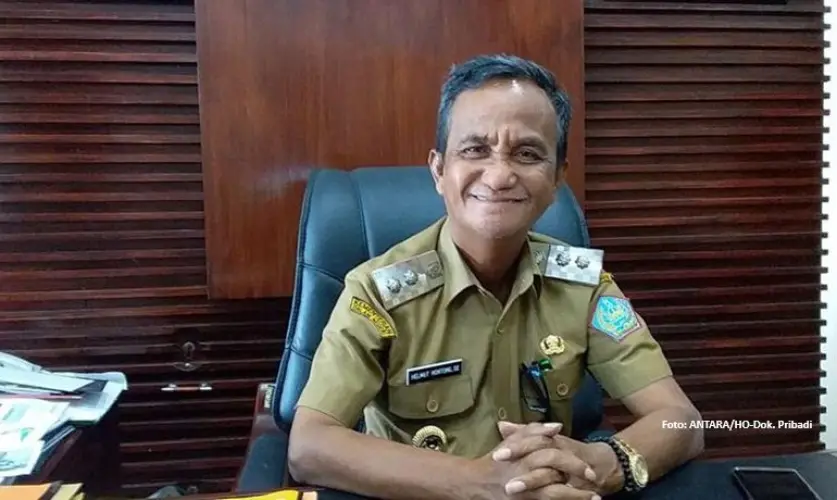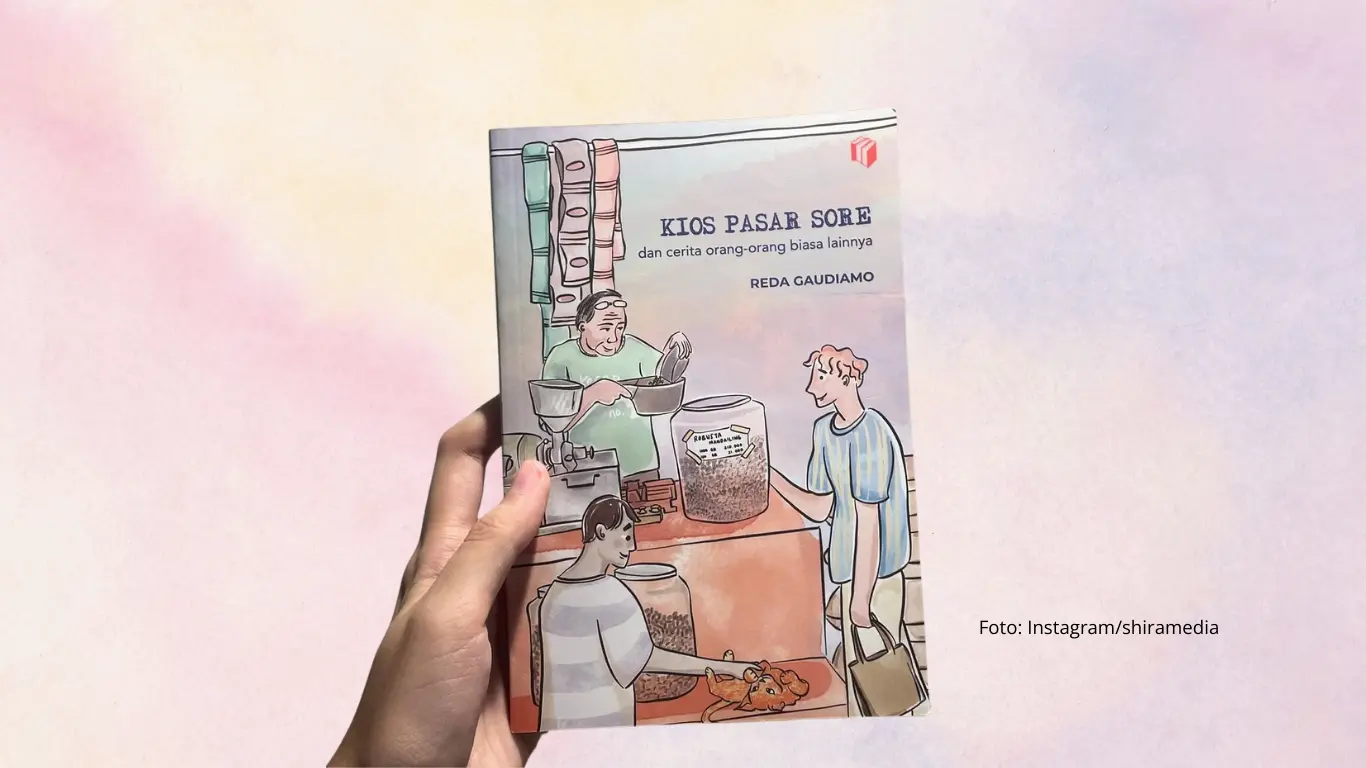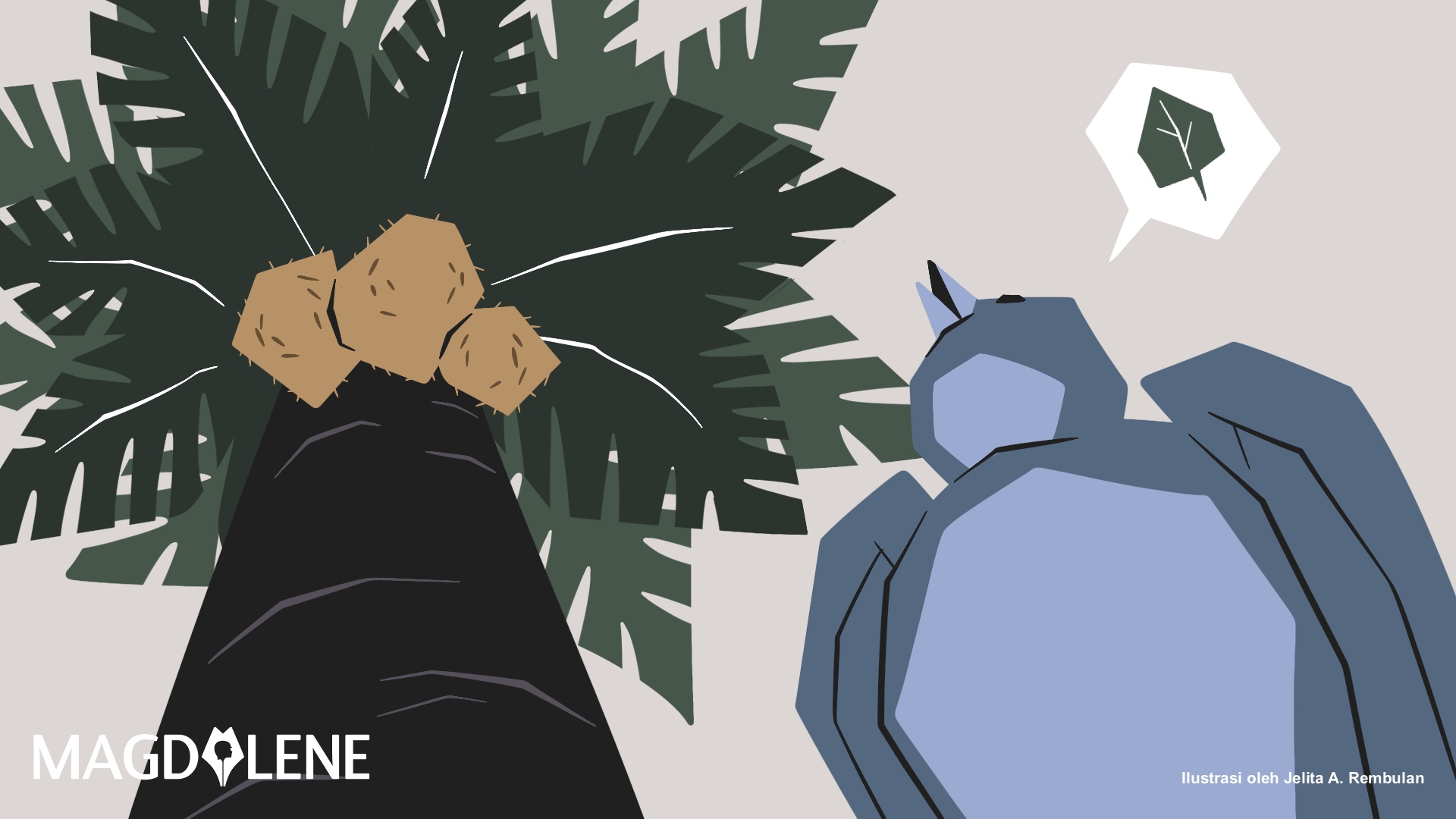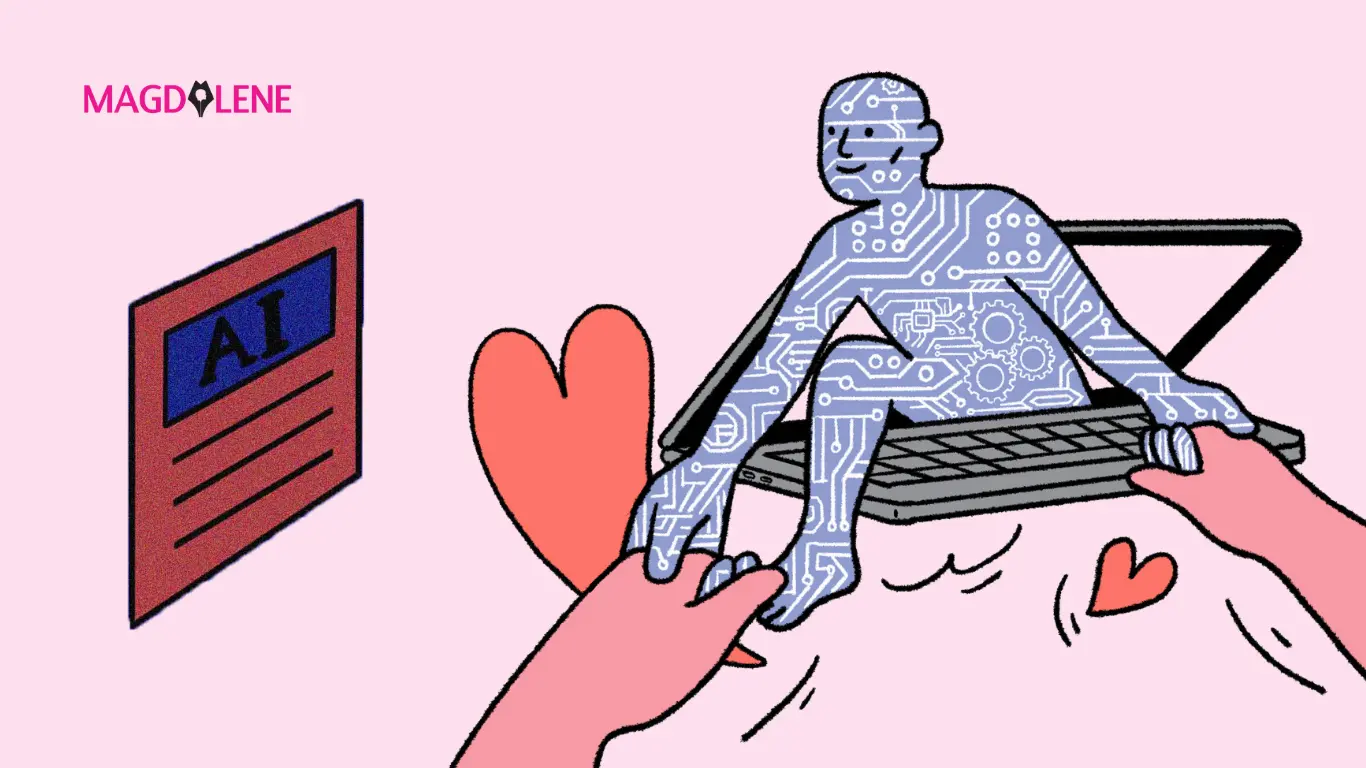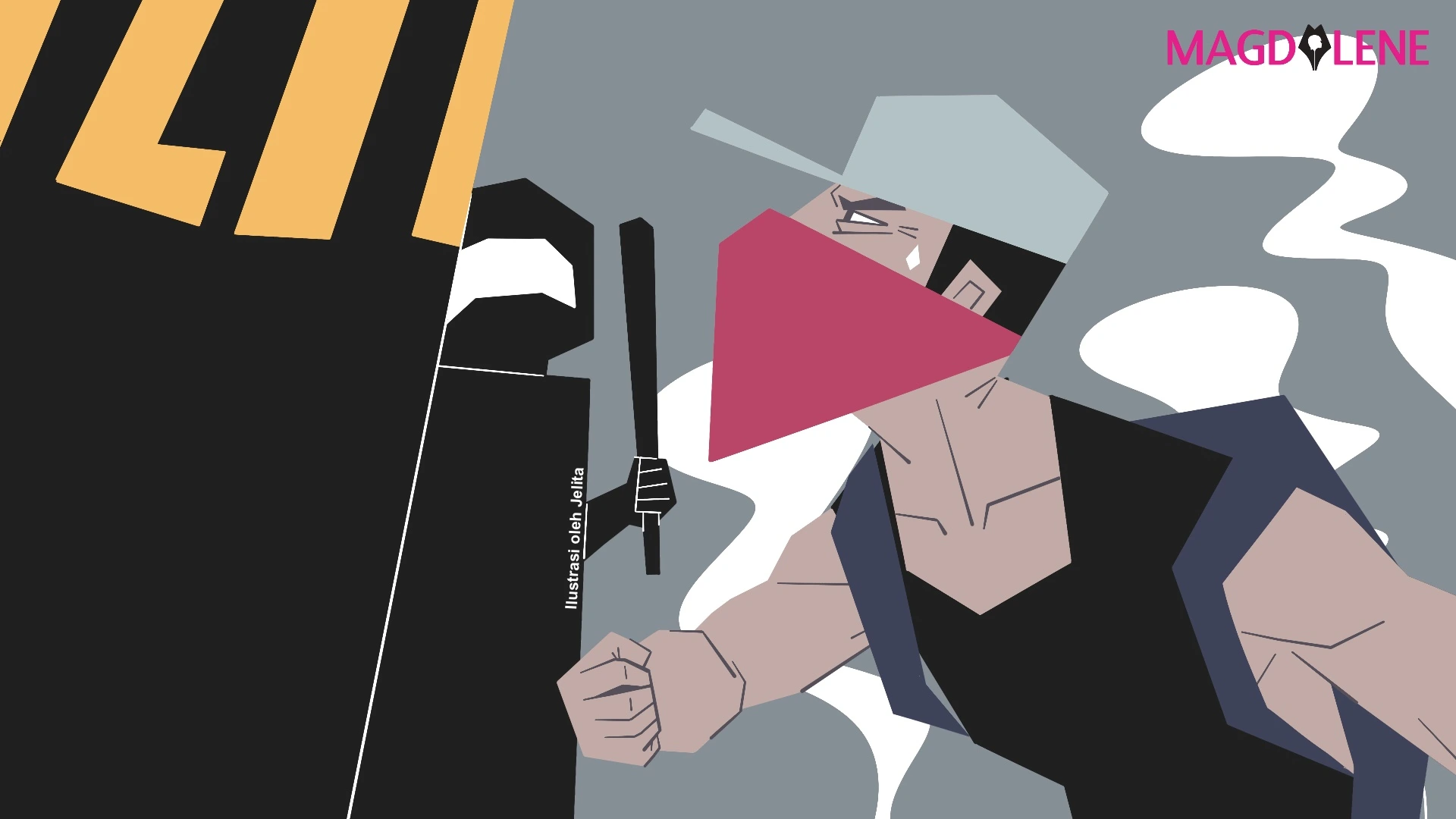Before We Were Attacked: My Experience at LadyFast
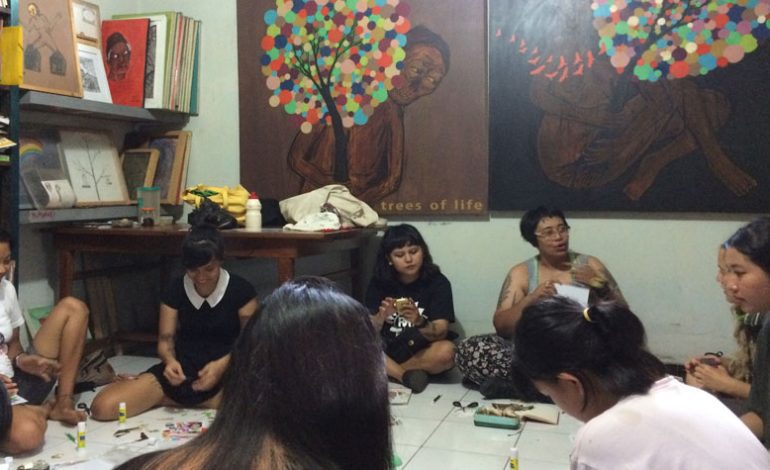
Saturday, April 2 around 1 p.m. I arrived at Survive!, a modest house turned exhibition venue on Bugisan Road, just outside of Yogyakarta city proper.
Survive! was to host LadyFast, a festival of music, art and discussions for women in the punk/hardcore community across Indonesia on April 2 and 3.
LadyFast is organized by Kolektif Betina, a gathering of women from various backgrounds who want to provide safe space for women to speak up “as a first step to overcome discrimination,” its manifesto says. That night, at around 10 p.m., a crowd attacked the festival. According to the chronology released by LadyFast organizers, the crowd pushed themselves into Survive!’s private space and caused destruction to the property. The police stood by watching.
When I arrived earlier that afternoon, only a handful of people had gathered wearing black t-shirts and shorts, sporting tattoos, dreadlocks or unsymmetrically shaved head – nothing special in the punk/hardcore community. Murals covered the terrace walls, one depicting skeleton with noodles as hair; a colony of paper stingrays flew across the wall. Above the door read the words “In Survive We Trust”.
Around the terrace several people had set up tables selling zines and paraphernalia, emblems, pins, snacks and drawings by the artists who came from various collectives in Yogyakarta, Jakarta and elsewhere.
The zines cover various issues, among them getting consent, raising children not with rules but with a sense of responsibility, trans men’s experiences getting arrested for looking like women, how to make your own sanitary pads, and a compilation of stories written by women who have experienced sexual and domestic abuse. I learned several new things from reading the zines.
The garage was transformed into an exhibition space featuring feminist artworks, including a photograph by Dinda Advena displaying a woman’s orgasmic face submerged in pink water (“Pleasure Seeking”) and a tattoo sketch by Lidya Aventa about a woman reclaiming her power once forcibly taken by a man (“Soft Power”).
The proprietor told me that Survive! was set up as an alternative exhibition space for artists who couldn’t afford to show at galleries. Survive! had been at the Jalan Bugisan location since 2009 and recently they held a craft market and an exhibition with 77 participating artists.
She told me she had worked hard to maintain good relations with the neighbors, for example, she strictly followed the community guidelines to stop playing music by 11 pm. Organizers provided water gallons, rice wrapped in banana leaves, and crackers. Pay what you will, the sign said.
The first event in the agenda was a collage-making workshop. This took place in the living room of the house. Participants sat on the floor, two fans droned, painstakingly delivering cool air. The mentor, Ika Vantiani, an artist and curator, gave us old magazines, scissors, and glue, and asked us to create a collage to represent our interpretation of the word “woman”. We then presented our work to the class.
Participants came from Java, Palembang, Kalimantan, and abroad. A writer from Malaysia called her collage “Blood,” because she thought every stage of women’s life involved blood: being born, puberty, becoming sexually active, giving birth, and entering old age.
Another person titled her work “Obedience,” as many girls were told to submit their whole lives, to their father before marriage and to their husband after marriage. Another dubbed her work “Gossip” to say that the world often disregarded women’s speech and gathering as trivial, merely gossiping.
Afterwards was a sharing session on gender-based violence led by Kartika Jahja (Tika) and Shera Rindra Pringgodigdo – both rape survivors and had been working as independent social workers accompanying victims of sexual assault.
They started by talking about the difference between sex and gender – the former being biological fact including our sexual organs, the latter a construction regarding our roles in society. Since we were born we were conditioned to expect men to be leaders, breadwinners, tough and strong; and women to be followers or supporters, domestic whizzes, beautiful and ladylike. Women are often valued based on their body and appearance.
“As a musician I know that if I want to be successful I have to write songs and play my instrument as best as I can, but as a woman I also have to worry about making my face pretty, my body skinny, or my records won’t sell,” said Tika.
These people take pride in their identity as part of the punk/hardcore community; they bring their children to the events.
Shera and Tika shared several cases they had handled, many involving gang rape, human trafficking, and incest. They also said the police often engaged in victim blaming – asking what clothes the victim was wearing, why they went out at night – or tried to broker peace between the victim and her attackers, instead of investigating and prosecuting the case.
Tika said once a woman was scratching her ears and was harassed. The man who did it said that any woman who was touching her ears was asking for it. Anything a victim did might be used against her.
“That is why we must stop putting burdens on women to keep from getting raped. We should all learn together to see women as more than a bag of meat to be used for sexual purposes. This is not about telling women to cover their bodies, to limit women’s movement outside the house, but about making everyone appreciate women as more than sexual objects.”
Most of the session’s participants were women, but there were also several men sitting attentively and asking many questions.
“Make a documentary on sexual assault in pesantren by the clerics,” suggested one man.
Another asked, “If you want equality, why don’t you discard the label ‘woman’? Why is there Komnas Perempuan and no Komnas Laki-laki, for example?”
Shera gave the historical background on the setting up of Komnas Perempuan: to handle cases of mass rapes during the ’98 riots. And Tika said, “Why did we hold LadyFast and not ManFast? Because everyday is ManFast.” She spoke about how women are rarely given the opportunity to talk about issues that matter to them, or even to play on stage.
In the documentary This is our scene too (directed by Hera Mary), which was supposed to be screened at LadyFast on April 3, women in the Indonesian punk/hardcore community talk about how they must fight for their space to perform and be acknowledged as equals to the men in the scene, not as mere fans whose tits and ass could be grabbed whenever it pleases the men.
Towards the evening more and more people came, including several foreign-looking visitors with blond hair and white skin, all wearing the typical punk/hardcore attributes. Sweat dripped from my face and neck. The crowd spilled out of the venue, looking for fresh air.
I took pictures, wondering what we might look like to outsiders. I realized our appearance might be scary to the uninitiated, a bunch of tough-looking people covered in tattoos and dark clothes with names such as Needle n’ Bitch collective. Could they be about drugs and prostitution?
According to their manifesto, Needle n’ Bitch is a collective, open to all genders and sexual orientations, supporting awareness of sexual health. “Needle” refers to their activities sewing and knitting, and “bitch” refers to how members often share stories as they knit or sew about their experiences that they couldn’t share elsewhere, because they would be labeled immoral, sinful, or shameful.
Needle n’ Bitch led a workshop on self-defense, teaching basic techniques anyone can use to defend themselves from attackers.
“Poke the eyes, it’s often effective,” they said, “but often self-defense meant being smart.” They told a story about the time they were hitchhiking from Medan to Jakarta, and the driver was showing clear signs of wanting to get them into a secluded area, so they pretended to have to pee really badly in order to escape from him.
These people take pride in their identity as part of the punk/hardcore community; they bring their children to the events. And it was easy to strike up conversations with almost everyone, all I had to do was smile and offer a handshake.
The Attack
Around eight o’clock the musical performance started. The female-fronted band Agony kicked off the night. While I was there, nobody head-banged or pogoed, which was surprising. Everyone was chill, listening and clapping.
Then the attack began. According to the festival organizers, the attackers cited alcohol and the clothes the participants wore as basis for the attackers’ objections. It seemed they didn’t bother trying to introduce themselves to festival participants, or to find out the meaning behind the naughty names. If they had tried, as I did, they would find that most of the people there were nice and that they meant well.
My experience of LadyFast was very positive. That was the reason I wrote this article, just in case most people associated punk/hardcore events with destructive activities.
Several people were drinking, but they only caused inconvenience such as asking rambling questions during workshops and loitering. The event’s emcee noticed the latter problem and asked everyone, “Let’s all pick up one piece of trash and put it in the bin.” As I saw it, the biggest hazard was caused by those who smoked around little children.
Still, as happened many times lately whenever a group of intolerant, close-minded, anti-discussion people attacked an event, the police took into custody the victims instead of the attackers, even though it was the attackers who were using violence, trespassing, destroying private property, and violating the constitution and the 1999 Human Rights Law that protect citizens’ right to free expression.
Until when are we going to stand by and let this happen?
Eliza Vitri Handayani is a novelist. She likes to write about people often misunderstood or labeled bad, rebellious, sinful. She posts some of her work at elizavitri.net. Say hi to her via Twitter or Instagram at @elizavitri.


